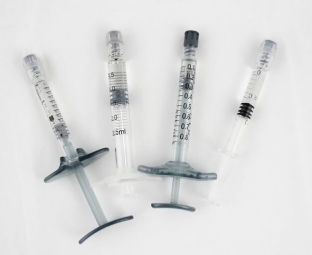Look good at any age – it is a natural desire of almost every person. In today's world, looks really matter. Studies show that beautiful people who look young, with enough perseverance, hard work and motivation, succeed in all areas of their lives.
Today, the beauty industry offers a huge number of services aimed at correcting age-related and many other changes in appearance. One of the most popular and effective cosmetic procedures today is the use of fillers based on hyaluronic acid.
There are a huge number of companies offering such preparations, and it can be difficult for estheticians to make a choice. On estet-portal.com read about how not to get confused in the vast world of hyaluronic fillers and make the right choice.
Hyaluronic fillers help to effectively transform the face
Hyaluronic acid is the best known glycosaminoglycan found in the human dermis. Exactly it is used in the basis of most modern fillers, primarily because it is not rejected by the body and does not give immune reactions.
Hyaluronic fillers are currently used to correct various defects and imperfections on the face.
Fillers can be used to smooth out deep and fine wrinkles, correct the shape of the lips, fill in sunken cheeks and hollows under the eyes, and even elevate the tip of the nose.
But it is important to remember that the choice of one or another type of filler depends on the individual characteristics of each patient, so it is so important for specialists to understand how hyaluronic fillers differ from each other.
Hyaluronic fillers:
- differences between hyaluronic fillers depending on their properties;
- hydration level – important difference between hyaluronic fillers.
Differences of hyaluronic fillers depending on their properties
Hyaluronic fillers have some fundamental differences that depend on their properties:
- "live" and artificial fillers: "live" fillers are made from cockscombs or from bacteria. Such fillers have a rather high cost, and at the same time they can cause allergic reactions, since the human body reacts to a natural allergen. At the same time, there are artificially synthesized fillers – more viscous, cleaner and less likely to cause allergic reactions;
- Filler Concentration: It is generally accepted that the higher the concentration of fillers – the more effective their application will be. In order for hyaluronic acid to be stable, its molecules must be linked together. Based on this, fillers are divided into partially connected and fully connected. At the same time, the latter act much longer;
- particle size: when hyaluronic acid is combined with a stabilizer, a gel-like substance is obtained. This gel passes through filters, resulting in particles of different sizes. Large particles are injected into the deep layers of the skin to correct pronounced, deep wrinkles, and small particles are used to correct fine wrinkles. Hyaluronic fillers are also produced, containing both large and small particles in one preparation.

Hydration Level – important difference between hyaluronic fillers
Another fundamentally significant difference between hyaluronic fillers is their level of hydration. Hyaluronic acid is able to bind water molecules that exceed their weight by almost 1000 times. The higher the level of hydration of the – the more water molecules it is able to attract.
Accordingly, fillers with partial hydration attract only part of the water, so the full result of the filler's work can be observed not immediately, but after some time.
Hyaluronic fillers are currently produced by a large number of companies, and it is important to give preference to only proven and really high-quality preparations.
Patients must understand that the choice of a quality drug cannot be made based on advertising alone. Only a competent and experienced specialist is able to select the necessary drug, taking into account the individual characteristics of each patient.







Add a comment